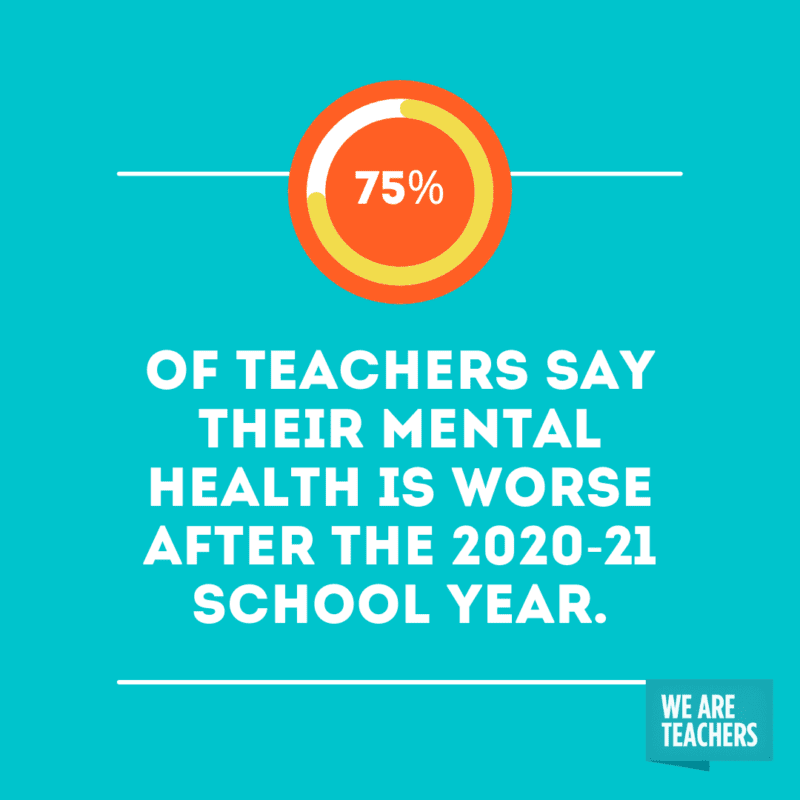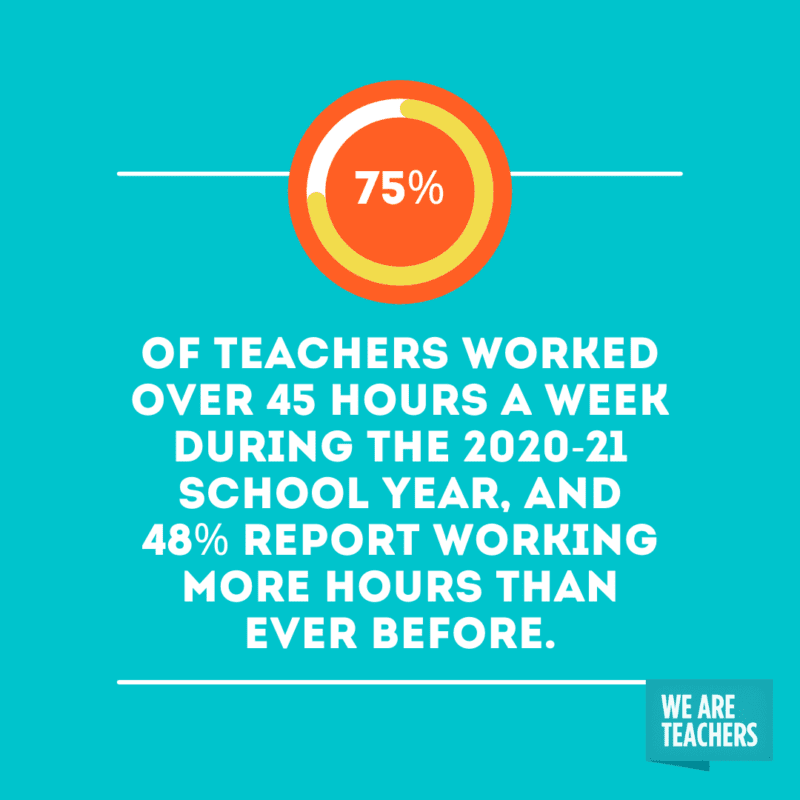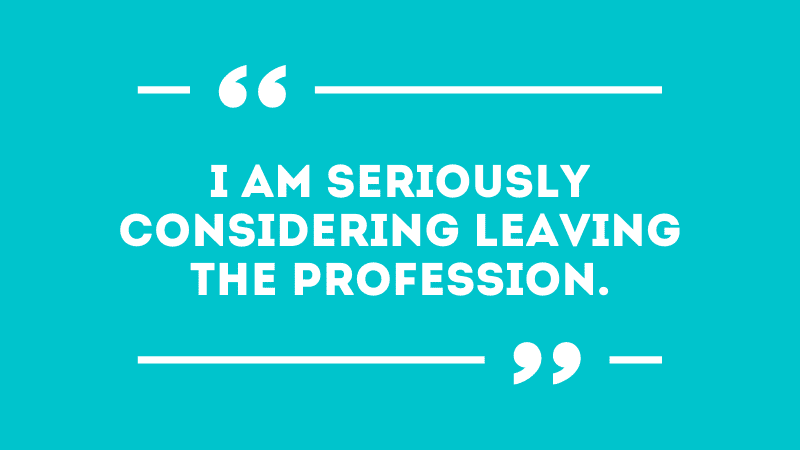“After the stress of this year, feelings of being unsupported by my community and my administration, and the fact that I could make more money at any other job, I am seriously considering leaving the profession.” This is the sentiment that comes up again and again when teachers share how the past year has affected them. From the challenges of teaching online and in person simultaneously to concerns about safety and mental health, pandemic teaching pushed teachers to the brink, and many are seriously considering a career change.
WeAreTeachers surveyed 2,500 members of our K-12 educator audience in April 2021 about their pandemic year. Our goal was to learn about what pandemic teaching was really like. Fifty-two percent of the teachers we surveyed reported that after this year, they’re considering leaving teaching, and 27 percent of teachers shared they plan to leave the profession within three years. For teachers to stay, things need to change and improve. Here are some of the other key findings.
Mental health is worse for teachers and students
The survey results revealed that pandemic teaching has taken a toll on teachers’ mental health. Seventy-five percent of survey responders reported that their own mental health is worse this year. Teachers didn’t get the support they needed, and it affected their mental health. One teacher shared, “My admin was not supportive at all. I’m drained and not okay.”

Another wrote, “they expected us to bend over backward for students and families, which we did because that’s what teachers do. But administration did not give us any of that kind of support.” When many teachers asked for help, they didn’t get it. A teacher shared, “I spoke to my principal about not having enough time at work to do work this year (after I was up until 9 p.m. the night before working), and she told me ‘this isn’t a forty-hour-a-week job’ and that ‘everyone’s working hard right now’ after I said I wasn’t taking care of my own mental health. I had to go on antidepressants to make it through this school year.”
Mental health is also worse for students. Eighty-one percent of teachers are concerned or very concerned about students’ mental health. A teacher wrote, “kids have tried their hardest, but they will need us to continue supporting them as they come out of it. I’ve shed tears over the mental health struggles they open up to me about.”
Teachers worked more hours than ever
This year teachers had to learn how to teach in new ways with new tools and with little to no training. This meant that teachers had to spend more time preparing and planning lessons, especially if they were teaching in a hybrid model. Seventy-five percent of teachers who responded to the survey worked over 45 hours a week this year, and 48 percent worked “significantly more” hours this year than previous years.

Students received less individual attention
Many teachers taught in a hybrid model where they were teaching students online and in person at the same time. This model made it challenging for teachers to give students individual attention and personalized, differentiated instruction. A teacher wrote about how difficult the hybrid model was. “This school year was very stressful. I did not do my best teaching this year. Teachers across the country, including myself, taught in-person and online. I have to teach live every day. I cannot be in two places at once. The kids in class need my help, and the kids online need my help at the same time.”
Constant changes made for a turbulent year
Fifty-four percent of teachers reported they changed learning environments more than twice this year. For example, a teacher wrote, “We as a staff voted for continued distance learning in the fall but our admin surveyed parents, who voted to reopen in hybrid. Teachers wrote a letter to the board but weren’t allowed to read it. Despite our concerns for health and safety and our own mental health, our school opened, and the expectation was ‘pivot’ without complaint.”
Teachers didn’t feel supported
Only six percent of the teachers surveyed received counseling support from their school or district this past year. And only 22 percent reported that they received emotional support. A teacher shared, “it has been a rollercoaster in terms of respect/esteem towards teachers. One minute everyone is singing praise and encouraging support, the next, teachers’ legitimate concerns are ignored, families blame them for circumstances out of our control, and plans change constantly without regard for staff well-being.”

An important survey finding: teachers were more likely to get tools and equipment than support and training this year. Sixty-six percent of teachers reported their schools provided the technology they needed this year. Seventy-two percent of teachers had the PPE they needed. However, only 39 percent of teachers reported receiving specialized training.
Nevertheless, many are hopeful and optimistic for next year
Forty-one percent of teachers reported they are “somewhat optimistic” about next year despite so many challenges and obstacles this year. Many teachers wrote about how they loved teaching before this year, and they missed seeing their students in the classroom.

